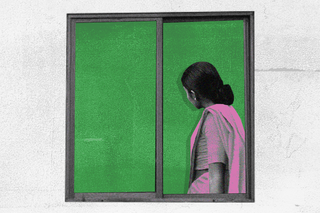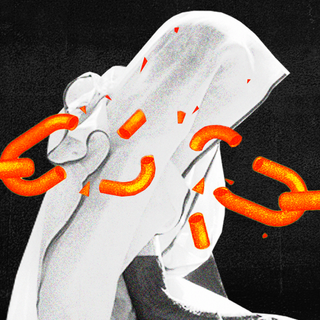
More than 98% Survivors of Gender‑Based Violence Don’t Seek Medical Help, Finds NFHS Survey
India’s response to gender-based violence is punitive in nature…. in all the focus directed at perpetrators, the individual in the thralls of violence is overlooked.

India’s latest rundown on health infrastructure and access to care remains laden with grim statistics. One takeaway among the findings of the latest National Health and Family Survey speaks of the health-seeking behaviors among survivors of gender-based violence. More than 98% of survivors do not take any medical or legal help to address the psychological and physical trauma of the violence. The aftermath of violence, then, presents a worrying gap in accessing institutions of care.
The survey looks at almost 6,36,699 households and traces violence only among cis women and men. So while the numbers may be more dire and incomplete, they reflect a systemic pattern of helplessness and lack of institutional care.
“This latest data reflect a dismal state in the practice of seeking medical care post gender-based violence, including sexual violence,” Médecins Sans Frontières said in a statement. “Current estimates reflect that healthcare-seeking behavior among the survivors is still net zero.”
Violence along gendered lines is a menace as old as patriarchal institutions themselves. The current state of affairs notes a worrying rise in domestic violence and sexual violence cases. Over 38% of murders of women are committed by current or former partners; Indian women account for 36% of global female suicide deaths; suicide is a leading cause of death among women aged 15-29 in India; 30% of women aged between 18 and 49 years had experienced sexual violence since they were 15. The pandemic had a debilitating impact on accentuating this violence, as many people were caged inside violenthomes without access to support. The ground reality is worse off as most cases are never documented or adequately reported upon.
The risk factor is jarringly laid out. What the new survey shows is the continuing trend of survivors staying silent after the violence — almost 77% of women never told anyone or sought help to address physical or sexual violence.
Related on The Swaddle:
Who survivors do look up to for help is also indicative of the state of affairs. Among women, in particular, their natalfamily becomes the first source of support; this is followed by the husband’s family (who 27% of participants sought help from) and then friends. Outside of immediate family and friends, 9% of women surveyed spoke of seeking help from institutional sources like the police, and even religious leaders (2%). Strikingly, less than 2% of women ever approached medical personnel, doctors, or lawyers for support.
This is concerning for two reasons. One, as is evident, family and friends become the first point of contact for the survivors — but they may lack the emotional and intellectual wherewithal to deal with aggrievedindividuals. Nearly one in three women suffer spousal violence; turning to family or friends then becomes exercises in forcing the individual to stay within a toxic relationship. While these channels may offer emotional succor in some cases, their capacity to deal with the psychological trauma is underdeveloped and colored by social norms.
“The uptake of medical care is essential as sexual violence and intimate partner violence have well-documented, long-term physical and psychological consequences. Women, exposed to sexual and physical violence, need immediate medical care to prevent pregnancy, HIV, and sexually transmitted diseases, and mental health support to reduce psychological distress and restore dignity,” said Dr. Himanshu M., Medical Coordinator for Médecins Sans Frontières.
Two, that survivors think of medical or legal support as the last resort for care is a worrying prospect. There are both logistical and ideological barriers at play; it remains difficult to access comprehensive medical care that is close to the survivor, mandatory police reporting comes with fear, and there is a lack of awareness regarding health consequences. In this laundry list of challenges, stigma, shame, and fear stand out; further isolating the individual from legal processes, health care workers, and the police. The gaps in institutions of care highlight not only a lack of trust, but also limited knowledge about the role they play in healing.
“Even if you know [of domestic violence shelters] and make a call, how do you know what to ask them? What to expect of them? That level of not delivering information even for a woman on the run, right up to systemic apathy, victim-blaming, and shaming language, shows the broader gaps in the larger system,” Kirthi Jayakumar, developer of the Saahas mobile app for survivor advocacy, told The Swaddle last year.
Related on The Swaddle:
Arguably, this could be attributed to the fact that India’s response to gender-based violence is punitive in nature. The infrastructure right now accounts for fast-track courts, police helplines, stronger laws, and even civil society organizations aiding the survivors. But therein lies a paradox — in all the focus directed at perpetrators,the individual in the thralls of violence is overlooked. “India’s response to gender-based violence has been political and legal. No one is talking about the sufferings of women. It is seen as an issue of honor rather than seeing the woman as a patient,” said Dr. Himanshu.
The systemic response is also telling of the way we look at violence born and bred due to patriarchy in the first place. Is almost “never looked at as a public health crisis requiring a range of medical services from first aid to mental health services and long-term care,” Mahima Jain wrote in Article 14. In India, domestic violence is a “private matter,” ghar ki baat.
This mindset tends to spill over points of contact within the institution too. “I have never seen a case where the first responder was the police and the survivor received any help,” Monika Tiwary from Shakti Shalini, a Delhi-based shelter for domestic violence survivors, told The Swaddle.
The neglect of the individual and the trauma in itself remain embedded in a system in-equipped to look after both. Experts speak of the need to shift the focus from institution to community care instead.
Dr. Nimrat Kaur, Project Coordinator, Umeed Ki Kiran Clinic, offers a roadmap: “Such a comprehensive care package must include confidential and quality clinical services with destigmatizing entry points and care process; community awareness of the health consequences of gender-based violence, including removal of the perception that mandatory police reporting is the first step to seeking care. It must also include a community-linked, survivor-centric model of care that facilitates access and provides comprehensive medical and psychological care round the clock.”
Saumya Kalia is an Associate Editor at The Swaddle. Her journalism and writing explore issues of social justice, digital sub-cultures, media ecosystem, literature, and memory as they cut across socio-cultural periods. You can reach her at @Saumya_Kalia.
Related


Maharashtra Village Bans Oppressive Widow Customs
